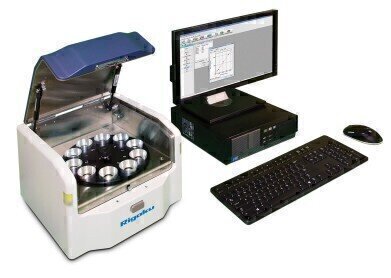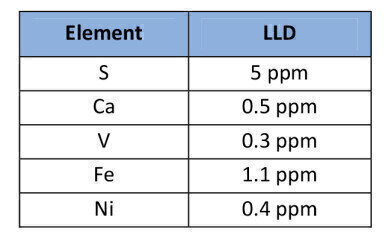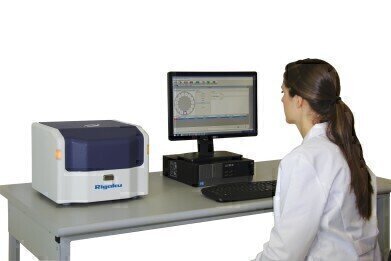-

-
 Image A: Empirical calibration results
Image A: Empirical calibration results -
 Image B: Lowers Limit of Detection
Image B: Lowers Limit of Detection -

Analytical Instrumentation
Elemental Analysis of Sulfur, Calcium and Metals in Crude Oil by EDXRF
Nov 15 2017
Background
Sulfur (S), vanadium (V) and nickel (Ni) occur naturally in crude oil, and their concentrations vary depending on the geographical region of the oil deposits. Depending on the region some crude may also contain measurable levels of calcium (Ca) and iron (Fe). High metal content can adversely affect the refining process during cracking, making crude oil with low levels of vanadium and nickel more desirable. Excess levels must therefore be removed before refining.
At the refinery, midstream in pipelines and at gathering points, a quick and easy means of screening and monitoring vanadium and nickel levels is essential for characterising the quality of the crude before refining.
Elemental Analysis by Energy Dispersive X-ray Fluorescence (EDXRF) is a valuable tool used to meet this industry analytical need. EDXRF spectrometers are elemental analysis tools of choice for many applications due their small size, simple design and low operating cost. For the petroleum industry, EDXRF offers rapid elemental analysis of chlorine, lead, sulfur and metals in crude, oils, gasoline, fuels, lubricants and waste materials.
Analysis
Each oil sample was homogeneous and stable. For the data collection, 31mm diameter XRF sample cups were filled 75% full (approx. 4g) and measured directly. A Rigaku NEX DE spectrometer was employed for data collection and reduction. Counting time of 700 seconds was used for all measurements.
For this example, empirical calibrations were built using a suite of 10 commercially available mineral oil calibration standards that represent crude oil. Table 1* gives the calibration results and demonstrates that good fits were achieved. *(Please refer to image A)
To demonstrate measurement precision, ten repeat analyses of a blank mineral oil sample were taken with the sample in static position, and the standard deviation (σ) determined. For the purpose of this example, the Lower Limit of Detection (LLD) was defined as 3σ. As shown in Table 2*, LLDs below 1 ppm were achieved for calcium, vanadium and nickel. Increasing the measurement time could further lower detection limits. *(Please refer to image B)
Conclusion
Modern EDXRF spectrometers give technical and non-technical operators alike a simple yet powerful and versatile system for quantifying multi-elemental composition using the empirical approach. The results indicate that given stable samples, proper sample handling and calibration technique, energy dispersive X-ray fluorescence achieves excellent performance for monitoring sulfur, calcium and metals in oil.
Digital Edition
PIN 25.2 Apr/May
April 2024
In this Edition Safety - Carbon monoxide toxic and flammable gas detection Analytical Instrumentation - Density: A fundamental parameter at critical stages within the petroleum sector...
View all digital editions
Events
May 06 2024 Riyadh, Saudi Arabia
May 06 2024 Houston, Tx, USA
May 06 2024 Houston, Tx, USA
Canada Gas & LNG Exhibition & Conference
May 07 2024 Vancouver, BC, Canada
May 08 2024 Lahore, Pakistan

















